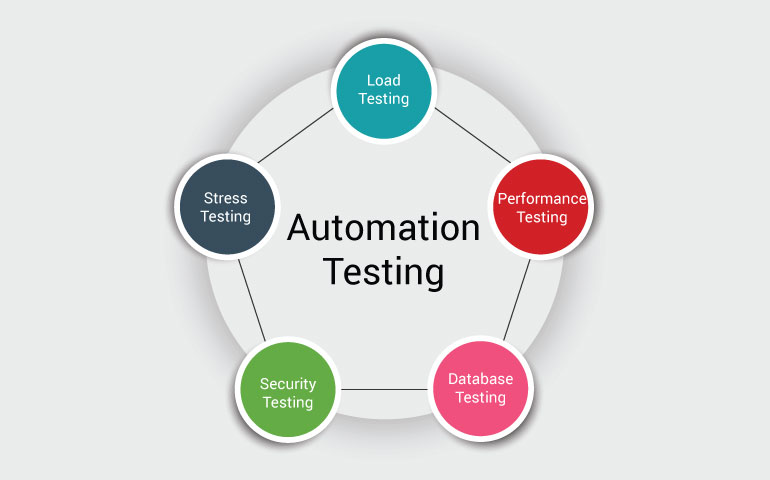Efficient Automation Testing: Enhancing Software Application Dependability and Speed
Ensuring Success in Automation Checking: Key Metrics, Obstacles, and Solutions Every QA Team Need To Know
In the realm of software program high quality guarantee, the landscape of automation testing is ever-evolving, demanding a careful technique to guarantee smooth operations. Secret metrics act as the compass assisting QA teams through the substantial terrain of examination automation, shedding light on progress and locations for enhancement. Challenges impend huge, often casting shadows on the path to success. By recognizing these hurdles and implementing efficient remedies, QA groups can navigate through complexities with skill. The trip to grasping automation screening is led with subtleties that require a keen eye for tracking, analysis, and continual enhancement. automation testing. As the sector pushes onward, the pursuit for optimum performance in automation testing remains a consistent search, advising QA groups to furnish themselves with the understanding and strategies important for victory.
Relevance of Secret Metrics
Recognizing the value of crucial metrics is important for assessing the efficiency and performance of automation testing processes. Key metrics function as measurable steps that provide valuable understandings right into numerous elements of the testing procedure, such as test coverage, examination execution time, issue density, and examination case performance. By examining these metrics, QA teams can recognize bottlenecks, ineffectiveness, and locations for improvement within their automation screening framework.
One crucial facet of crucial metrics is their capability to track progression and keep an eye on the overall wellness of the testing procedure (automation testing). They allow stakeholders to make enlightened decisions based on data-driven understandings, which can result in extra effective screening techniques and far better resource allotment. In addition, essential metrics can aid teams established reasonable objectives, gauge the success of automation initiatives, and show the ROI of automation screening efforts

Common Obstacles Dealt With
Challenges typically come across in automation screening procedures can significantly impact the general performance and efficiency of QA teams. Among the major difficulties is the choice of the right examination situations for automation. Not all examination situations are suitable for automation, and picking the wrong ones can lead to thrown away time and sources. Additionally, keeping test scripts can be a challenging job, especially as the application undergoes regular changes. Test manuscript maintenance needs continual updates and alterations to ensure they show the current functionality precisely. Another typical obstacle is the initial investment required for establishing up automation structures and devices. This can be an obstacle for some companies, particularly smaller sized ones with limited spending plans. Additionally, automation testing may not cover all facets of testing, such as usability and customer experience testing, which still require hand-operated intervention. Getting rid of these difficulties needs appropriate preparation, strategic examination situation option, robust upkeep processes, ample sources, and a clear understanding of the restrictions of automation testing.
Efficient Solutions for Difficulties
To deal with the obstacles come across in Recommended Reading automation screening, executing effective solutions is necessary for boosting the efficiency and performance of QA groups. One essential solution is to purchase robust training programs for QA teams to ensure they have the needed skills to effectively make use of automation devices. Training can link expertise gaps, improve understanding of automation frameworks, and improve scripting capacities, why not check here eventually resulting in much more effective examination development and implementation.
An additional essential solution is to establish clear interaction channels within the QA group and with various other stakeholders, such as programmers and task supervisors. Efficient interaction aids in straightening expectations, sharing progression updates, and immediately addressing problems or obstacles that might emerge throughout the automation screening process.

Tracking and Analysis Strategies
Executing reliable tracking and analysis methods is important for ensuring the success and performance of automation testing processes. By using monitoring devices, QA groups can track the performance of examination manuscripts, determine traffic jams, and determine locations for enhancement. Real-time surveillance enables fast discovery of problems, allowing rapid feedback and resolution. In addition, examining test results and metrics offers useful understandings into the high quality of the software being tested and the effectiveness of the testing technique.
One trick method in tracking and analysis is using control panels that consolidate appropriate metrics and KPIs in a visually accessible format. These dashboards supply a comprehensive introduction of test execution condition, examination protection, problem trends, and other important information. On a regular basis examining and examining these control panels can assist QA teams make notified decisions, prioritize jobs, and maximize testing initiatives.
Furthermore, carrying out automated notifies and alerts based upon predefined thresholds can enhance aggressive tracking and prompt he said intervention. By setting up informs for performance discrepancies or examination failures, teams can address concerns immediately and stop them from intensifying. Generally, tracking and evaluation methods play an essential duty in making sure the effectiveness and success of automation testing campaigns.
Constant Improvement Methods
Enhancing the efficiency of automation testing procedures requires the constant improvement of approaches and methods. Constant improvement strategies are crucial for QA teams to adapt to advancing modern technologies and supply top quality software. One vital technique to improving automation screening processes is to perform routine testimonials and retrospectives. By assessing previous testing cycles, groups can recognize bottlenecks, inefficiencies, and areas for improvement. Carrying out comments loopholes and incorporating lessons found out right into future testing frameworks can generate considerable enhancements gradually.

Conclusion
Finally, it is crucial for QA groups to comprehend the essential metrics, challenges, and remedies in automation screening to guarantee success. By very carefully checking and assessing information, carrying out efficient solutions to typical challenges, and continuously enhancing strategies, QA teams can maximize their testing procedures and deliver high-quality software. Abiding by these methods will ultimately cause more effective and reliable automation screening practices.
By examining these metrics, QA teams can identify traffic jams, ineffectiveness, and locations for improvement within their automation testing framework.
Additionally, key metrics can help teams set practical goals, determine the success of automation initiatives, and show the ROI of automation testing efforts.
Difficulties typically run into in automation screening procedures can significantly affect the overall efficiency and performance of QA groups. Automation testing might not cover all facets of testing, such as functionality and individual experience screening, which still call for manual treatment.In conclusion, it is vital for QA teams to comprehend the crucial metrics, challenges, and remedies in automation testing to make certain success.